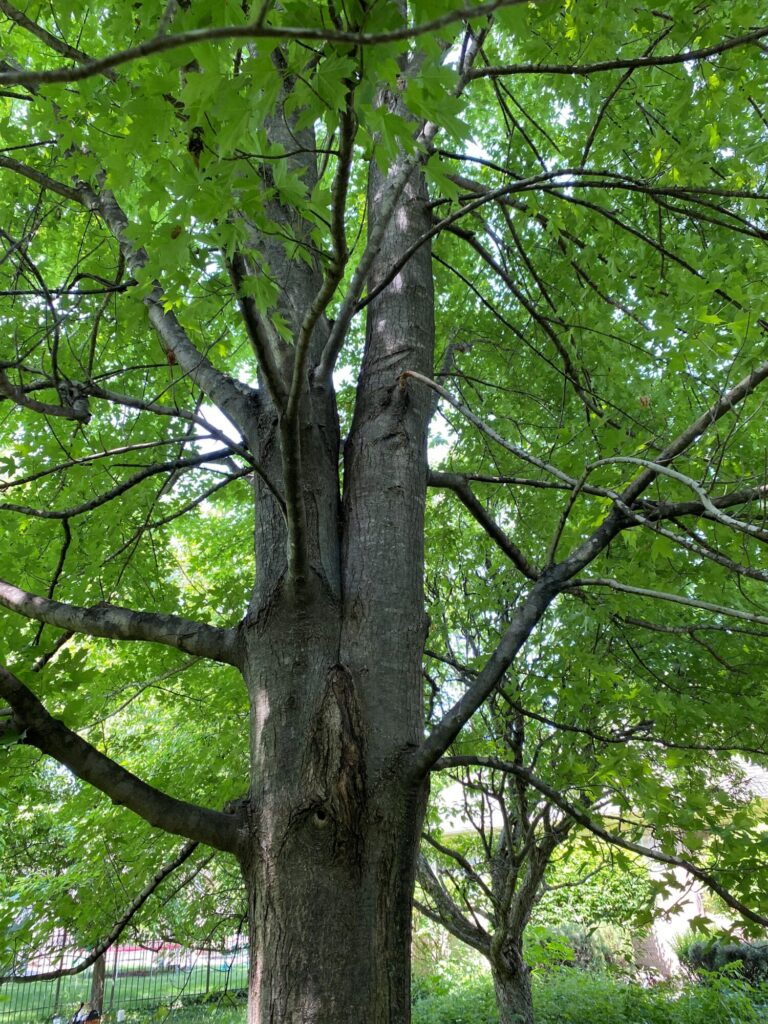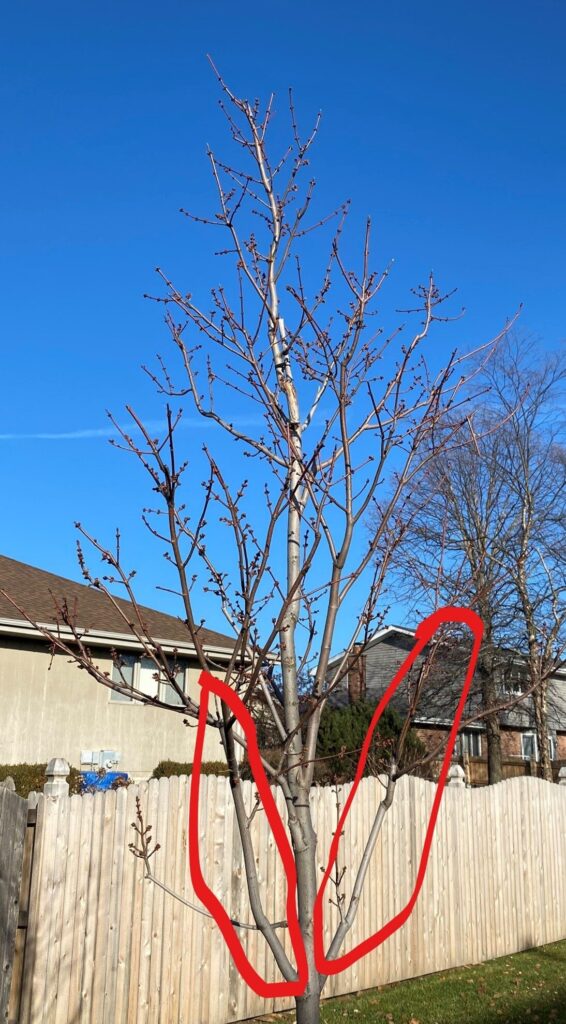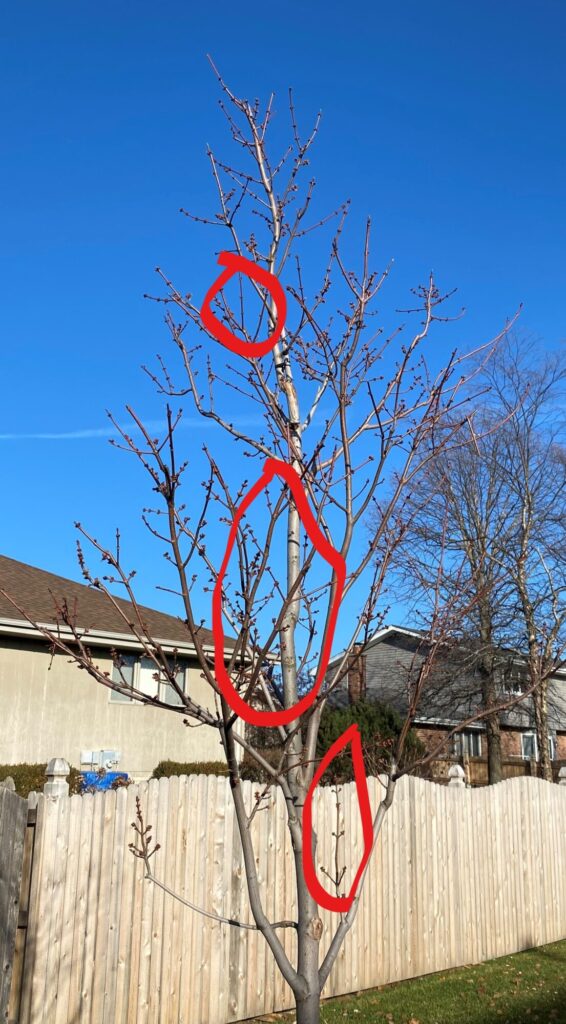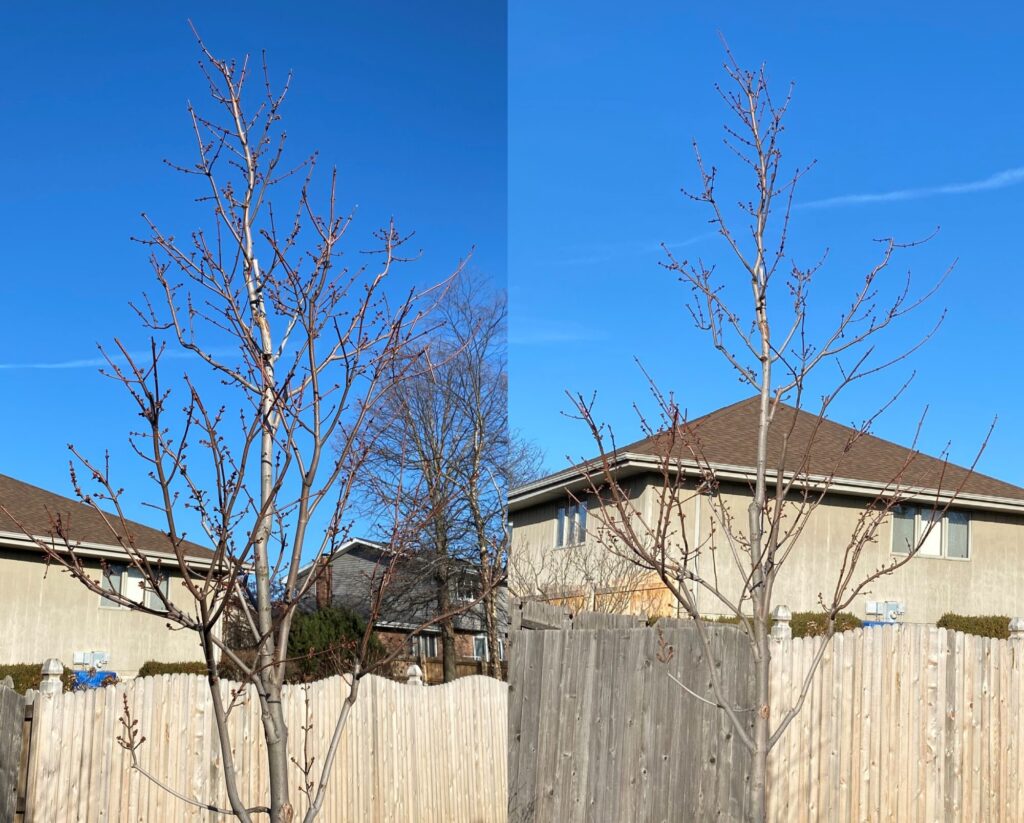When planting a new young tree, or hiring someone to plant one for you, knowing the right structure of a properly grown shade tree will pay dividends in the long term. Studies have shown that formative pruning of shade trees saves money and labor. Structural issues in young trees may develop as the tree ages and either require more corrective pruning in the future or limit the tree’s lifespan by creating premature failure points. In this article, we’ll cover some primary issues that young trees may develop either at the nursery or garden center where you may buy them.
First off, why do we prune? Believe it or not: trees in our landscape do not always naturally grow with the classic shape and structure we all know. A typical shade tree starts in a nursery where it grows for several years and is shaped to have good branching and structure. A healthy and properly structured tree will typically have the first branches occurring at about 5.5 to 6 feet up from the root flare. This is to provide clearance for walking and mowing. The tree should also have a very clearly defined central leader, which is to say the main trunk should be obvious the whole way up without any similarly sized limbs clearly competing to be the leader. Many species of trees are more prone to these structural defects than others. For example: Locust and Kentucky coffee trees require lots of pruning in the nursery to properly take shape. On the other hand: Pin oak and Sycamore are well known for forming a strong central leader with less codominant limbs. The first thing to look at is the central leader of the trunk. Are there other limbs near the trunk and clearly growing at a sharp upward angle? Are they growing closer in line with the main trunk? Are the branches a similar thickness as the central leader? Competing leaders like this should always be removed to ensure the tree has a proper structure as it matures. Leaving them may lead to poorly branched limbs which may split away during a storm event in the future.

Another consideration is the height and symmetry of the first branches. Height refers to how high off the ground branches occur, and symmetry means having at least two present branches approximately at the same height. Having only one branch at the first branching point will create a visual gap on the tree that will look unappealing, and leaving the first branches too low will limit the space under the canopy as the tree grows. Correcting this problem while the tree is young will allow branches at the correct height to fill in the lower space on the tree.

The third structural flaw we’ll describe in this article is inward-growing branches. These are any branches that are growing inward towards the main trunk. This is a particularly common issue in trees with opposite branch arrangements, such as Maple trees. If left alone, these branches may continue growing inwards towards the trunk, and cause rubbing against the trunk or other branches. Inward-growing branches are the simplest type of defect to prune out when training a young tree. Any branches clearly growing in towards the main trunk can be safely pruned out to improve the tree’s structure.

This example tree underwent corrective pruning by our plant healthcare team. Let’s see the before and after side-by-side for comparison:

The remaining branches are all properly radiating away from the trunk, and none were left competing with the central leader. The structural pruning of this tree has developed a better shape that will help ensure it grows properly for decades after planting. If you have a newly planted tree that may need to be pruned and shaped, the tree care experts at Homer Tree Care can help make sure your trees get off to a good start. Call our office today for a free consultation with a certified arborist.

